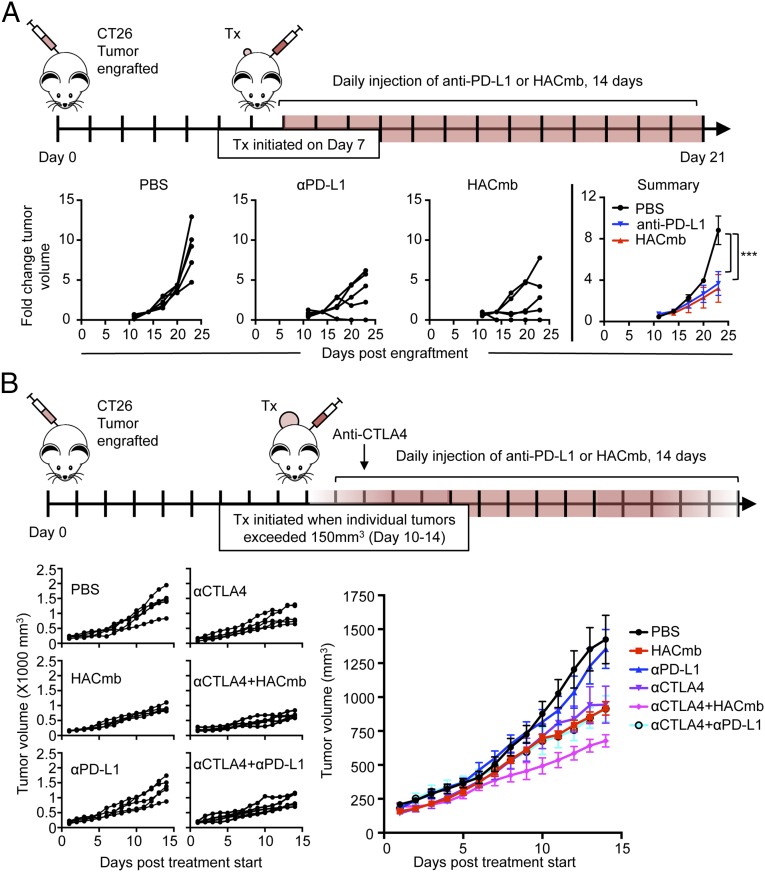Fig. 4.
Antitumor efficacy of HACmb and anti–PD-L1 antibodies in small and large CT26 syngeneic tumor models. (A, Top) Schematic illustrating the experimental design of the small tumor experiment. Treatment was initiated for all cohorts 7 d after engraftment of tumors. Mice were injected with daily doses of vehicle (PBS), 250 µg anti-mouse PD-L1 (clone 10F.9G2), or 250 µg HACmb for 14 d. (A, Bottom) Relative growth rates of engrafted tumors, calculated as fold-change from displayed individual tumors (Left three panels) or as summary data (Far Right panel) over the course of the treatment period. Error bars represent s.e.m. n.s., not significant. ***P < 0.0001. (B, Top) Schematic illustrating the experimental design of the large tumor experiment. Mice were engrafted with CT26 tumors and monitored daily. When an individual tumor exceeded 150 mm3, the mouse was randomized to a treatment cohort. Tumors were measured daily and received daily treatment with vehicle (PBS), 250 µg anti-mouse PD-L1 (clone 10F.9G2), or 250 µg HACmb for 14 d. Anti-CTLA4 (clone 9D9) was administered as a single dose of 250 µg on day 1 of treatment. (B, Bottom) Summary data for average tumor growth over the 14-d period of treatment. Error bars represent s.e.m. n.s., not significant. ***P < 0.001, two-way ANOVA. Complete statistical analysis at day 14 posttreatment is shown in SI Appendix, Table S3.

